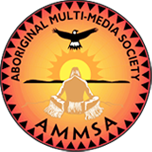Article Origin
Volume
Issue
Year
Page 13
The Nikanihaw Aboriginal Leadership Aquatic Program in Edmonton is training 20 Aboriginal youth between the ages of 16 to 25 to be swimming instructors.
Held at the Grand Trunk Fitness & Leisure Centre every Wednesday evening, the program is funded by the City of Edmonton, Canadian Heritage and the Amiskwaciy Academy.
Classes include water rescue, water safety, first aid, including CPR, swim stroke techniques and instructor courses. At the end of the course, students are expected to swim 500 metres in 14 minutes for the bronze medallion, or 600 metres for the bronze cross.
The classes, which began in early October, will provide successful participants with a certificate in March. The majority of the students are from the Amiskwaciy Academy, though a few participants attend other high schools, college or work. Bonnie Doon Leisure Centre lifeguard John Mervyn and Grand Trunk Fitness & Leisure Centre lifeguard Christine Belter are the instructor trainers of the program. Belter says that she is enjoying instructing the students.
"It is going really well. We have a really eager bunch of participants who have varying skill levels in the water. They are certainly putting their effort in and we are seeing a huge improvement. They are a real enthusiastic group. They are committed," she said.
According to Belter, the students are not only acquiring skills in swimming, but also skills that can be transferred to other programs. She says that the leadership skills can be used in education careers or in law programs and the mechanical, technical and chemistry water skills can be used in trades or engineering.
"There is a lot that can be taken out of it," she said.
Upon graduating from this program the students can go to a swimming facility in their own communities and be able to work or teach. However, Belter says there is a potential for it to be a two-year program where they can get their lifeguard certifications, but she says that is dependent on how they are doing and whether they get the funding.
"Some of them are definitely having more challenges, but they are really putting in a lot of extra time on their own to build up their strength and endurance in the water, so that they can meet the testing requirements to get their certification. As far as practicing to teach swimming they are really committing themselves to that. I already see the group getting really close and stuff like that. It is kind of typical in this program. You kind of develop a really good relationship," she said.
For 15-year-old Delaney Gladue it is good program.
"You learn a lot of stuff. How to rescue. It teaches you how to swim better. Basically lifeguard stuff," she said.
- 1004 views
